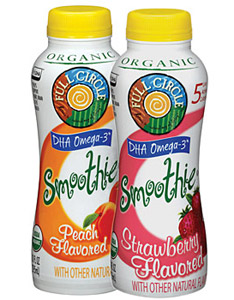Using fatty acids in dairy foods


|
We need dietary fat. Milk naturally contains fat. So let’s better understand the facts on fat and communicate this to consumers instead of trying to dodge the topic. After all, dairy foods are in a unique situation when it comes to fatty acid profile, as research shows that all fatty acids are not created equal. When it comes to dairy, the negatives associated with saturated fatty acids might actually be minimized by inherent nutrients. Further, the refrigerated or frozen storage requirements for most dairy foods render them ideal products for enhancement with beneficial fatty acids, primarily omega-3s.
Scientists at the Department of Human Nutrition at the Faculty of Life Sciences, University of Copenhagen, Denmark, conducted a study to explore why dairy products containing saturated fatty acids and high contents of calcium do not significantly affect blood cholesterol levels as much as saturated fatty acids from other sources. The results were published in the British Journal of Nutrition (February 2011) and suggest that calcium with milkfat may help maintain good cholesterol (high-density lipoprotein, or HDL) while minimizing any increase in bad cholesterol (low-density lipoprotein, or LDL). The findings lend credence to the notion that milk and other dairy products with high-calcium content might actually reduce the risk for cardiovascular disease.
This is great news for the dairy industry, as it challenges historical intervention studies that have pointed to a relationship between a diet high in saturated fatty acids and increases in total cholesterol and LDL cholesterol.
“We know there are many adults today concerned about their fat intake, cholesterol levels and heart disease risk,” says Greg Miller, president of the Dairy Research Institute and executive vice president of the National Dairy Council, Rosemont, Ill. “We believe this study underscores the importance of dairy as a good daily source of calcium, protein and other nutrients while mitigating the impact on cholesterol.”
The study also reinforces findings published in the Dietary Guidelines Advisory Committee report in 2010 that suggest “bioactive components that alter serum lipid levels may be contained in milkfat.”
Indeed, the tide is turning on the reputation of fat as we begin to understand more about how our bodies actually use and need dietary fat, and realize that low-fat diets may have been working against us, according to “Fats and Oils: Culinary Trend Mapping Report,” from Packaged Facts, Rockville, Md., and the Center for Culinary Development (CCD), San Francisco.
This mindset shift about fat parallels how consumer opinion has changed regarding carbohydrates. Thanks to fresh science and the well-reinforced lessons about whole grains, consumers are savvier than ever about the notion of good carbs and bad carbs.
“We suspect that fats are coming next into the limelight, and the same ‘good fat, bad fat’ consumer filter will be applied,” says Kimberly Egan, CEO of CCD.
Without a doubt, whole-food enthusiasts are turning to the fats used in pre-industrial times to recapture what they feel is lost goodness. Hence, butter and cream are gaining popularity while margarine and nondairy coffee whiteners are falling by the wayside. (Check out Butterfi in this month’s New Product Review on p. 22.)
CCD predicts that ghee, a South Asian form of clarified butter believed to have healing qualities and nutritional benefits, will start making its way into mainstream dairy cases. Unlike traditional butter, ghee has a high smoke point that makes it ideal for deep frying. Also, we should expect to see more buttery spreads that combine milkfat with oils high in omega-3s. This makes the butter more spreadable and gives it an improved fatty acid profile. (See Twisted Butter in January’s New Product Review.)
Without a doubt, awareness of omega-3 fatty acids as being one of the most important nutrients for physical and mental health has reached critical mass, according to the Packaged Facts report “Omega-3: Global Product Trends and Opportunities.” The report says that the number of consumers who seek out high-omega products has increased dramatically during the past few years. In the U.S. market, for example, 9% of grocery shoppers buy high omega-3 food or beverage products in a typical grocery shopping trip, and the percentage of adults who take fish oil supplements has jumped from 8% in 2006 to 17% in 2011.
The two best understood omega-3s —docosahexaenoic acid (DHA) and eicosapentaenoic acid (EPA) — serve as primary building blocks for the brain and the eyes and support brain, eye and cardiovascular health, among other potential benefits under investigation, throughout life. They are either derived from fish or algae, and are the only omega-3s that the Food and Drug Administration allows for a qualified health claim. Both are available as ingredients with application in dairy foods, most notably fluid milk and yogurt.
Make 2012 the year that your company markets products as containing healthful fatty acids.
Looking for a reprint of this article?
From high-res PDFs to custom plaques, order your copy today!





